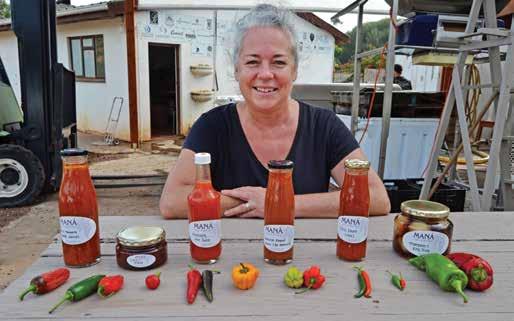THE VILLAGE
NEWS
10 MARCH 2021 YOUR FREE COPY #ALLOVEROVERBERG The next issue of The Village NEWS will be out on 17 March 2021.
www.thevillagenews.co.za
A year of Covid-19 Writer De Waal Steyn
T
his week, on Thursday 11 March, we will mark one year since the first Covid-19 case was reported in the Western Cape and as the warm summer days make way for cooler autumn weather, many of us are taking stock of the past year and the battles we were faced with. In those early days we did not know much about the virus, but we knew from what we saw in other parts of the world that changes were in store for us. Little did we know how irrevocable these changes would be and what devastation the pandemic would wreak on the fabric of our society. If you somehow survived the year completely unscathed, you are one of the very few lucky ones. And while we ready ourselves for the coming long-weekends and the Easter holidays we must, at the same time, be aware that scientists are already warning of a third wave of the pandemic. Western Cape Premier Alan Winde said last week that while the data currently shows that we have overcome a significant and serious second wave, our work is not done. “We must prepare ourselves for a third wave, to save lives and limit the impact of Covid-19 on the livelihoods of our residents.” But unlike a year ago, when a hard lockdown to give the country time to prepare its health services was the only option, this year the preparations for a third wave include the roll-out of current stock of vaccines, and the procurement of more vaccines by the Western Cape Government. “Over the past six weeks, the Western Cape has recorded significant declines in the number of Covid-19 infections in the province. While we are in this space between peaks and waves, it is imperative that we all take personal responsibil-
ity to ensure that we remain safe,” the Premier said. According to Winde, Western Cape epidemiologists are part of a technical working group who are preparing a response to a possible third wave. “While we know that a third wave is likely, we cannot predict the timing, location or magnitude of a resurgence. We do however know that it could be driven by six key factors.”
These factors are: • Changes in viral transmissibility which could be brought about by changes in the weather and seasonal changes in behaviour such as the Easter weekend and funeral attendance. • Behavioural changes among the population such as the changes in restrictions and adherence to quarantine and isolation protocols. • Changes in interactions between connected subpopulations such as movements between provinces and movement between urban and rural areas. • Changing immunity/reinfection risk, as there is some evidence to show immunity post infection. However, this may wane over time. • Viral evolution, as new variants like 501Y.V2 could affect viral transmissibility. • Speed, impact and uptake of vaccinations will also impact the severity of a third wave. “Between peaks, our focus must be on containment, and ensuring that clusters of cases, related to a specific place or event, do not result in widespread community transmission. Once community transmission has been established, containment efforts become ineffective and the focus must then shift to mitigation measures, to reduce the numbers of deaths, ensure that our healthcare system does not become overwhelmed and protect our healthcare workers,” Winde said. Continues on P 2
It was a special moment for Jenny Parsons from Pringle Bay when she found this Table Mountain Beauty (Aeropetes tulbaghia) feeding on the honeysuckle (Tecomaria capensis) in her garden. This beautiful butterfly – the largest of southern Africa’s satyrine (Brown) butterflies – is abundant at this time of year when they pollinate various red flowers in the fynbos. The Table Mountain Beauty is also the only pollinator of Disa uniflora. If the Table Mountain Beauty should go extinct, so will the Disa. PHOTO: Jenny Parsons






















